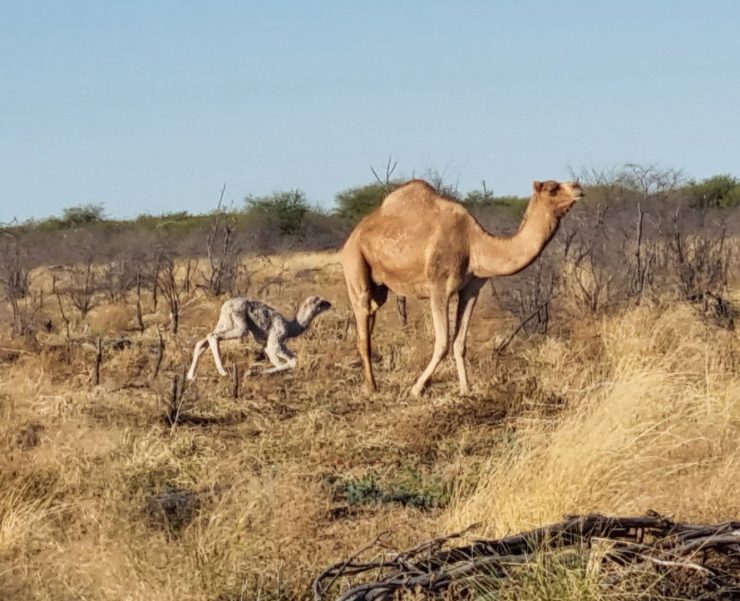The recent birth of a camel calf has solidified a decades long fight to see one of the country’s worst weeds controlled.
The Desert Channels Queensland group recently celebrated the birth of the first calf born to the camel research herd in central north Queensland.

For the DCG, it’s a significant step in the fight to control one of the country’s worst weeds, the Prickly Acacia.
The Prickly Acacia is a thorny shrub or small tree most commonly found in central and northern Queensland. It is a Weed of National Significance, regarded as one of the worst weeds in Australia because of their invasiveness, potential for spread, and economic and environmental impacts.

In an attempt to control the widespread movement of the woody weed, Desert Channel Queensland researchers are using a small herd of camels as part of a project to ‘identify and quantify just how efficient camels are in controlling Prickly Acacia in varying densities, seasons and husbandry methods’.
Researchers know camels are effective in controlling the spread of the weed as they can consume large quantities of the bush and effectively digest the weed which stops it from spreading. Their trial will look to confirm the success of camel grazing, paired with other livestock as a way of minimising the spread of the weed.
For more information about the trial and the Prickly Acadia, head to Desert Channels Group.







































Add comment